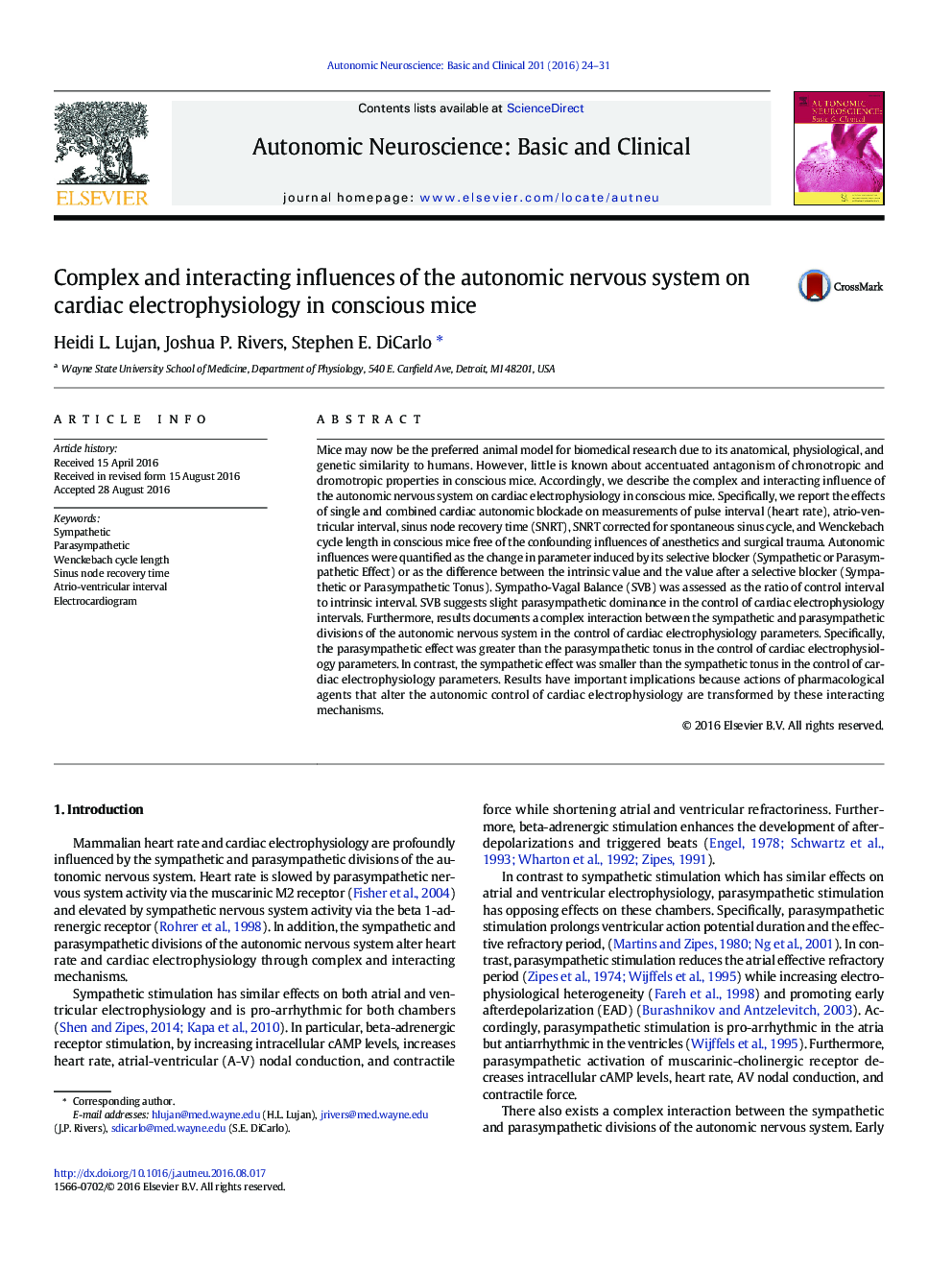| کد مقاله | کد نشریه | سال انتشار | مقاله انگلیسی | نسخه تمام متن |
|---|---|---|---|---|
| 5625989 | 1579514 | 2016 | 8 صفحه PDF | دانلود رایگان |
- The Sympatho-Vagal Balance index documents a slight parasympathetic dominance of cardiac electrophysiology in conscious mice.
- Thus, resting cardiac autonomic balance of conscious mice is more similar to that of humans than originally reported.
- The concept of accentuated antagonism of heart rate and cardiac electrophysiology parameters applies to conscious mice.
- This is important, especially in view of the ever increasing use of this animal species in cardiovascular research.
- Pharmacological agents used for cardiac disorders have varying effects depending on the background level of autonomic tone.
Mice may now be the preferred animal model for biomedical research due to its anatomical, physiological, and genetic similarity to humans. However, little is known about accentuated antagonism of chronotropic and dromotropic properties in conscious mice. Accordingly, we describe the complex and interacting influence of the autonomic nervous system on cardiac electrophysiology in conscious mice. Specifically, we report the effects of single and combined cardiac autonomic blockade on measurements of pulse interval (heart rate), atrio-ventricular interval, sinus node recovery time (SNRT), SNRT corrected for spontaneous sinus cycle, and Wenckebach cycle length in conscious mice free of the confounding influences of anesthetics and surgical trauma. Autonomic influences were quantified as the change in parameter induced by its selective blocker (Sympathetic or Parasympathetic Effect) or as the difference between the intrinsic value and the value after a selective blocker (Sympathetic or Parasympathetic Tonus). Sympatho-Vagal Balance (SVB) was assessed as the ratio of control interval to intrinsic interval. SVB suggests slight parasympathetic dominance in the control of cardiac electrophysiology intervals. Furthermore, results documents a complex interaction between the sympathetic and parasympathetic divisions of the autonomic nervous system in the control of cardiac electrophysiology parameters. Specifically, the parasympathetic effect was greater than the parasympathetic tonus in the control of cardiac electrophysiology parameters. In contrast, the sympathetic effect was smaller than the sympathetic tonus in the control of cardiac electrophysiology parameters. Results have important implications because actions of pharmacological agents that alter the autonomic control of cardiac electrophysiology are transformed by these interacting mechanisms.
Journal: Autonomic Neuroscience - Volume 201, December 2016, Pages 24-31
